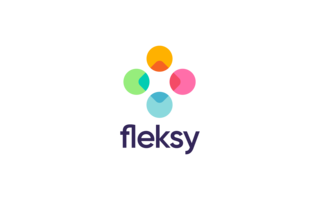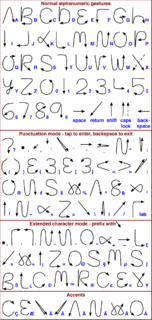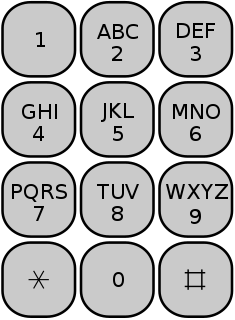 W
WFleksy is a third-party, proprietary virtual keyboard app for Android and iOS devices. It attempts to improve traditional typing speed and accuracy through enhanced auto-correction and gesture controls. Fleksy uses error-correcting algorithms that analyze the region where the user touches the keyboard and feeds this through a language model, which calculates and identifies the intended word. Swiping gestures are used to control common functions, such as space, delete, and word correction. Fleksy is available in 49 languages. Fleksy holds the Guinness world records for fastest keyboard.
 W
WGboard is a virtual keyboard app developed by Google for Android and iOS devices. It was first released on iOS in May 2016, followed by a release on Android in December 2016, debuting as a major update to the already-established Google Keyboard app on Android.
 W
WGraffiti is an essentially single-stroke shorthand handwriting recognition system used in PDAs based on the Palm OS. Graffiti was originally written by Palm, Inc. as the recognition system for GEOS-based devices such as HP's OmniGo 100 and 120 or the Magic Cap-line and was available as an alternate recognition system for the Apple Newton MessagePad, when NewtonOS 1.0 could not recognize handwriting very well. Graffiti also runs on the Windows Mobile platform, where it is called "Block Recognizer", and on the Symbian UIQ platform as the default recognizer and was available for Casio's Zoomer PDA.
 W
WiTap is a predictive text technology developed for mobile phones, developed by Motorola as a competitor to T9. It was designed as a replacement for the old letter mappings on phones to help with word entry. This makes some of the modern mobile phones features like text messaging and note-taking easier.
 W
WLetterWise and WordWise were predictive text entry systems developed by Eatoni Ergonomics (Eatoni) for handheld devices with ambiguous keyboards / keypads, typically non-smart traditional cellphones and portable devices with keypads. All patents covering those systems have expired. LetterWise used a prefix based predictive disambiguation method and can be demonstrated to have some advantages over the non-predictive Multi-tap technique that was in widespread use at the time that system was developed. WordWise was not a dictionary-based predictive system, but rather an extension of the LetterWise system to predict whole words from their linguistic components. It was designed to compete with dictionary-based predictive systems such as T9 and iTap which were commonly used with mobile phones with 12-key telephone keypads.
 W
WMessagEase is an input method and virtual keyboard for touchscreen devices. It relies on a new entry system designed by Saied B. Nesbat, formatted as a 3x3 matrix keypad where users may press or swipe up, down, left, right, or diagonally to access all keys and symbols. It is a keyboard that was designed for devices like cell phones, mimicking the early cell phones' limited number of 12 keys.
 W
WMicrosoft SwiftKey is a virtual keyboard app originally developed by TouchType for Android and iOS devices. It was first released for Android in July 2010, followed by an iOS release in September 2014 after Apple allowed third-party keyboard support.
 W
WMulti-tap (multi-press) refers to a text entry system for mobile phones. The alphabet is printed under each key in a three-letter sequence as follows; ABC under 2 key, DEF under 3 key, etc. Exceptions are the "7" key, which adds a letter ("PQRS"), and the "9" key which includes "Z". Punctuation is typically accessed via the "1" key and various functions mapped to the "*" key and "#" key.
 W
WTypewise is a virtual keyboard developed by Typewise AG for Android and iOS devices. Typewise features a self-developed hexagonal layout and a predictive typing engine suggesting the next word depending on context and multilingual language support. It includes a dark color theme as well as other designs. The keyboard supports more than 40 languages. In December 2020, Typewise passed 500.000 installs on the Google Play Store and App Store (iOS).